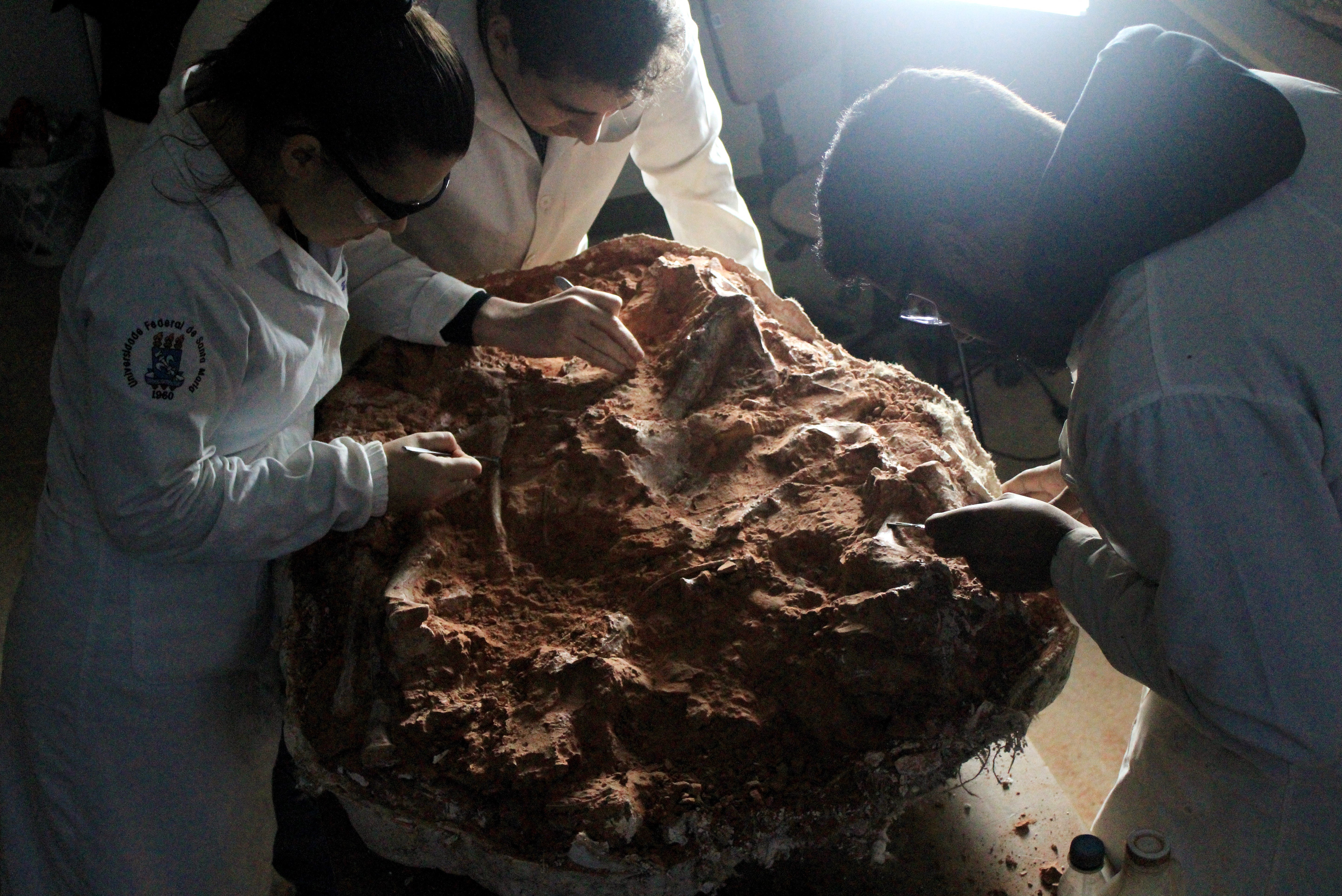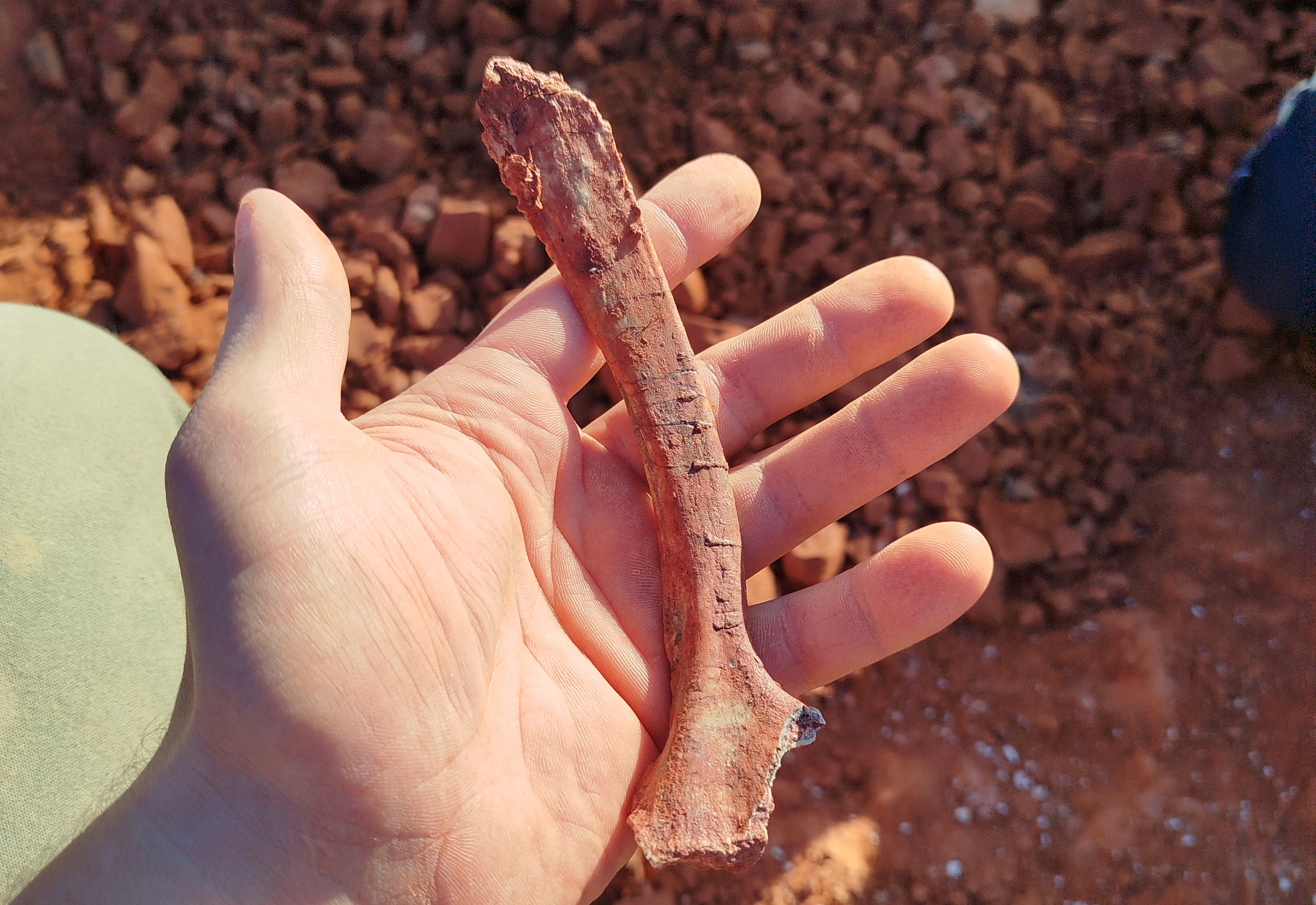Torrential rains in Brazil have eroded parts of a fossil site, revealing what scientists think could be the world’s oldest known dinosaur skeletons.
The “almost fully preserved” dinosaur fossil, discovered next to a reservoir in Brazil’s southernmost state of Rio Grande do Sul, could be around 233 million years old, researchers say.
They suspect the fossil creature lived during the Triassic Period, when all of the Earth’s continents were a single landmass called Pangea, and dinosaurs had just emerged.
Researchers suspect the unearthed fossil belongs to a member of the Herrerasauridae family of carnivorous dinosaurs that grew to about 2.5m in length.
These two-legged dinosaurs are known to have wandered across vast sections of present-day Brazil and Argentina.

“It’s among the oldest in the world,” Rodrigo Müller from the Federal University of Santa Maria told local news agency Agência Brasil.
“Initially it seemed like just a few isolated bones, but as we exposed the material, we were able to see that we had an almost complete skeleton,” Dr Müller told the Associated Press.
Currently, the oldest dinosaur specimen conclusively known to humans is a collection of fossils from different species dated to about 231 million years ago.
There are also more disputed fossils that date back as far as 240 million years.
If the yet-to-be peer-reviewed findings, if found to be true, could shed more light on the origin of dinosaurs, scientists say.
The dinosaur age is known to have begun in the 50-million-year Triassic Period following the Permian extinction event when about 90 per cent of the planet’s species perished.

“It’s already important because of the role it’s likely to play in helping us understand the origin of the dinosaurs,” Dr Müller said.
However, the region where the fossil site is located in Southern Brazil is subject to increasingly devastating torrential rains each year.
In June, the state received three months of rain within just two weeks causing floods that killed nearly 200 people, according to Brazil’s civil defense.
Researchers are in a race against time to unearth remaining fossils in the region before further rains destroy them as they found that a “leg bone and a pelvis bone” were already destroyed by the floods.

